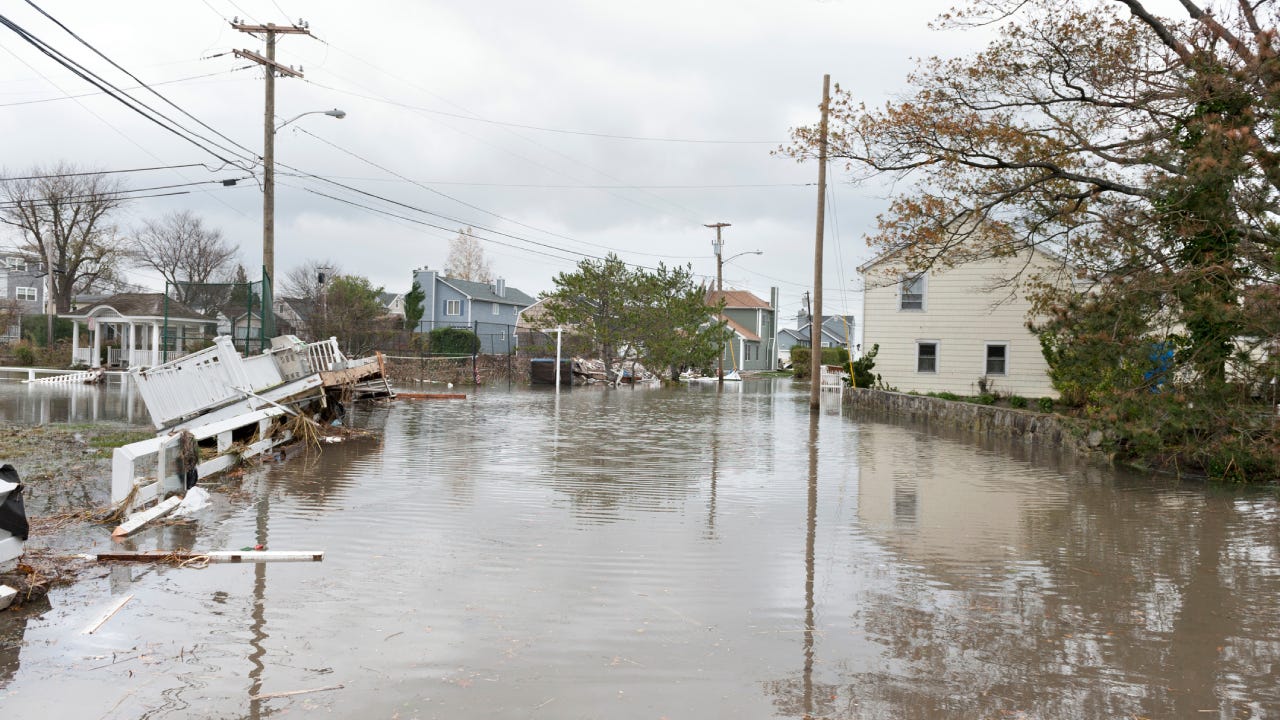New York flood insurance

The Bankrate promise
At Bankrate, we strive to help you make smarter financial decisions. To help readers understand how insurance affects their finances, we have licensed insurance professionals on staff who have spent a combined 47 years in the auto, home and life insurance industries. While we adhere to strict , this post may contain references to products from our partners. Here's an explanation of . Our content is backed by Coverage.com, LLC, a licensed entity (NPN: 19966249). For more information, please see our .
Key takeaways
- Flood damage is not covered by standard home insurance policies
- homeowners must purchase a separate flood policy for coverage in most cases.
- Average rates for private flood insurance are not available, but an NFIP flood policy for a single-family home in New York costs an average of $1,105 per year.
- Implementing certain flood mitigation tactics might help you secure a cheaper policy.
- Most flood policies have a 30-day waiting period before coverage takes effect, but there are exceptions.
Flooding is the most common natural disaster in New York, impacting around 90 percent of residents. Damage in the wake of a flood can be devastating. Yet, many homeowners are surprised to learn that flood damage is not covered by standard home insurance policies. In nearly all cases, flood coverage must be purchased separately. Bankrate is here to walk you through the ins and outs of purchasing flood insurance in NY.
Do you need flood insurance in New York?
In September 2023, New York was hit with historic levels of rain and flooding. The remnants of tropical storm Ophelia collided with another storm system to dump a record-breaking 8-plus inches of rain in NYC in a 24-hour period. It wasn’t the first time New York had seen catastrophic flood events, though. Hurricane Sandy caused an estimated $19 billion in damage.
From 1996 to 2019, New York experienced around 2,582 floods, according to data from the Federal Emergency Management Agency (FEMA). It is estimated that floods cause around $136 million in damage every year in the state. Despite how prevalent floods are, many homeowners are unaware that their home insurance policies will not cover flood damage. In order to protect yourself financially from home and personal property damage after a flood, you must purchase a separate flood policy.
Flood insurance, like home insurance, is not a legal requirement. However, if you’re in a flood zone, your mortgage lender will require you to carry flood insurance. The policy will need to be in place when closing on the house. If you’re not in a flood zone, you’re not required to carry flood coverage. However, flooding happens anywhere — and often in non-flood zones.
How much is flood insurance in New York?
Average rates aren’t available for private flood insurance, but a National Flood Insurance Program (NFIP) policy for a single-family home costs an average of $1,105 per year. However, if you live in a flood zone, your flood policy will likely be more expensive. Note that premiums must be paid in full each year; you cannot make monthly payments.
Coverage amounts can also affect the cost of your flood insurance. Generally, there are two types of flood policies: dwelling-only coverage or dwelling and personal contents coverage. A dwelling-only policy is cheaper but will only provide coverage for your home’s physical structure. A dwelling and personal contents policy can cover your home and your personal belongings up to your policy limits.
Like home insurance, flood policies have a deductible. The deductible amount will also affect the cost of your flood insurance policy. If you are looking for cheap flood insurance in New York, you may receive a more favorable rate if you opt for a policy with a higher deductible.
Flood mitigation features can help you secure a cheaper policy, as well. These may include installing flood openings that allow water to drain out safely or placing utilities (like electrical panels and water heaters) off the ground.
How to purchase flood insurance in New York
There are two ways to purchase flood insurance in New York: directly through the NFIP or through a private company that offers flood insurance. NFIP policies are federally backed and can cover up to $250,000 in building coverage and $100,000 for personal contents.
Some private New York insurance companies have partnered with FEMA to help policyholders secure NFIP coverage, but other private insurers write their own flood policies. If you need higher coverage limits or want more robust flood coverage, you may have better luck going through a private insurer. With this route, you can collect and compare multiple quotes, similar to how you would shop for home insurance.
When can you purchase flood insurance in New York?
You cannot wait until you need it to purchase a flood insurance policy — coverage does not take effect immediately or apply retroactively. Most policies from the NFIP are subject to a 30-day waiting period. A private flood insurance policy will also likely impose a 30-day waiting period, but that may not always be the case. Whether your policy is a government plan or private plan, the waiting period may be waived if flood insurance is a requirement for your loan closing.
An insurance moratorium may also prevent you from purchasing flood insurance. A moratorium is when insurers temporarily stop selling certain insurance policies, usually ahead of a named storm. If too many people purchase policies before a storm blows into town, insurers may not have enough money in reserve to pay out claims afterward. Flood claims are some of the most expensive kinds, so it’s best to have your policy firmly in place before disaster strikes to help protect your finances.
Frequently asked questions
-
-
Like home insurance, most renters insurance policies do not cover flood damage. As a renter, you are not financially responsible for your home or apartment’s physical structure, but a flood could still damage your personal belongings. To avoid high out-of-pocket expenses, you might look into purchasing a flood policy.
-
Flood insurance is not required. However, since home insurance doesn’t cover flood damage, getting flood insurance may be worth considering. A single inch of floodwater can do up to $25,000 in damage to your home — most of which would not be covered by a standard home insurance policy. Purchasing flood insurance can help protect the financial investment you’ve made in your home.
-
Related Articles



